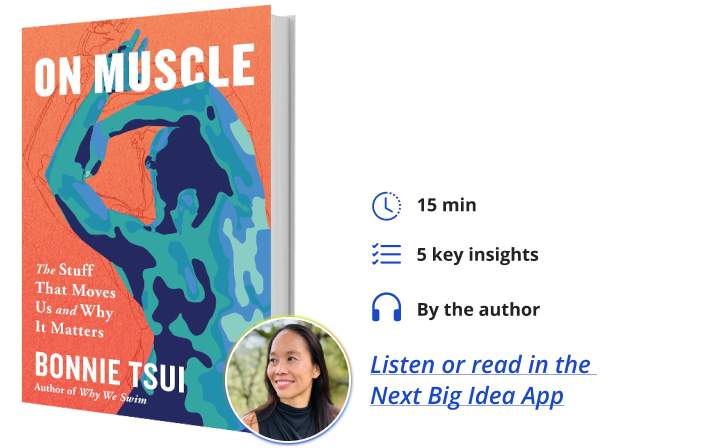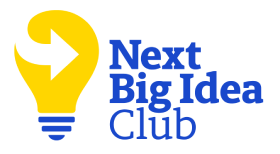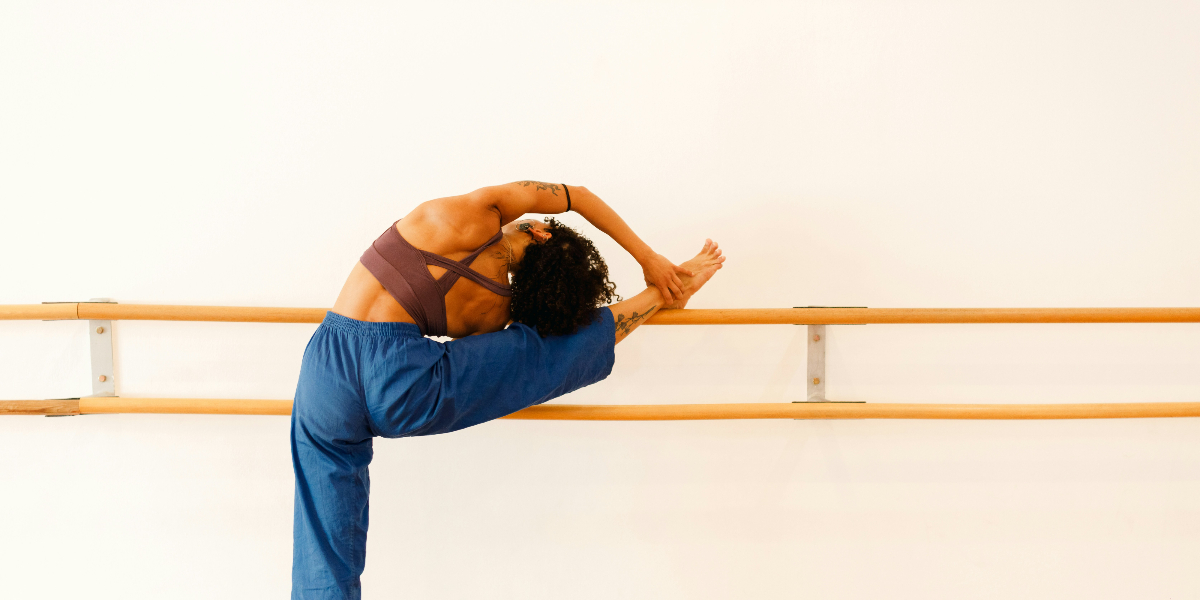Bonnie Tsui is a longtime contributor to the New York Times and the bestselling author of several books, including American Chinatown and Why We Swim. Her work has been recognized and supported by Harvard University, the National Press Foundation, the Mesa Refuge, and the Best American Essays series.
What’s the big idea?
Muscles are unsung heroes in our bodies. They allow us to move through the world, set emotions into motion, explore ideas of beauty, and even help us define who we see in the mirror. Musclehood as personhood is a philosophy that dates to the ancients. Discover what your muscles are, and what they mean, to remind yourself of all that you are truly capable of.
Below, Bonnie shares five key insights from her new book, On Muscle: The Stuff That Moves Us and Why It Matters. Listen to the audio version—read by Bonnie herself—in the Next Big Idea App.

1. Muscles are smarter than we think.
We’ve long thought of muscles as kind of dumb, as opposed to the brains of the operation. But muscles have their own intelligence. Skeletal muscle is a massive organ that accounts for about 40 percent of your body weight. It’s an endocrine tissue, meaning it releases signaling molecules called myokines that “talk” to other parts of your body, including your brain. Structures like the hippocampus, responsible for memory, get bigger with regular exercise. Bulking up muscles literally bulks up our brains!
And it turns out that muscle itself can remember things. Most of the time when we talk about muscle memory, we’re not talking about the muscles themselves, but about the memory of a coordinated movement pattern that lives in the motor neurons, which control our muscles. But in recent years, scientists have discovered that our muscles themselves have a memory all their own—on the cellular and epigenetic level—for exercise. That means that muscle cells can increase in mass more quickly than they did previously, even after a months-long—or perhaps even years-long—workout hiatus.
2. Muscles are a way to reach for joy.
Charles Darwin had a lot to say about jumping. Muscles, he said, were a way to express joy, but also a way to get to joy. Kids and puppies and horses romp and jump and frisk because, he wrote, “the mere exertion of the muscles after long rest or confinement is itself a pleasure.” When we feel good inside, we are moved to move.
I love Darwin’s idea of using the body as a tool to find levity. Dacher Keltner, the noted author, happiness scholar, and professor of psychology who heads the Berkeley Social Interaction Laboratory, told me that certain emotions are more about the body: “Joy, for example, which often involves jumping,” he said. “Emotions are all about action. And the preparation and intention for action.” Joy is movement, and movement is joy.
3. Muscle is potential, strength, and owning your own strength.
Muscle, as a tangible thing, has a fascinating and outsized influence on how we think about ourselves as people. Qualities of muscle that we admire are a kind of shorthand for character: we tell ourselves to be strong, show good form, be a person of action, be flexible, muscle through hard moments, show grit, and endure. Even when we’re not being people of action, we’re telling ourselves to relax, to let go.
“To gain political power, one needed physical power.”
The work of building our muscles teaches us not to let others take away hard-won power without a fight. Strength training and lifting weights have been shown to improve the mental health of patients suffering from PTSD; to see tangible, incremental gains, the changes from day to day, is to understand that you are a person of agency. During the 19th-century women’s suffrage movement, prominent activists believed in physical fitness as a strategy for emancipation. Exercise was a way for women to get control of their bodies and reproductive lives. To gain political power, one needed physical power.
4. Muscle is astoundingly capable of change.
Muscle is one of the very few tissues that adapt and change on a daily basis. Minute to minute, muscles are reacting to changes in the environment and respond with what is needed, from the moment you wake up to when you go to sleep. Every moment is an opportunity for your muscles.
5. It’s never too late to get stronger.
Strength training is the single most important thing you can do to slow or even reverse the normal muscular decline of aging. People don’t always receive this prescription for a daily dose of iron—pumping iron, that is—from their doctor or take it seriously enough to fill it when they do.
Muscles get older, but they can still be reminded to do what they did in their youth. They can be rejuvenated in the most surprising of ways. With resistance training in aged muscle, research shows that you can reset (to some level) the epigenetic changes to be on par with young people’s muscle. Even exercisers who don’t start until late in life can gain remarkable mass and strength. No matter how old we get, the capacity to bounce back is there for us all.
To listen to the audio version read by author Bonnie Tsui, download the Next Big Idea App today:





























